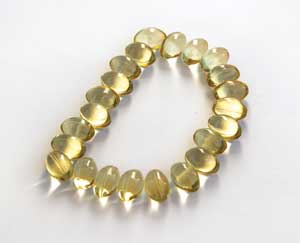By Katie Bell
Vitamin D deficiency is prevalent in patients in the northern US undergoing midfoot, hindfoot, and ankle arthrodesis, even in those without predisposing risk factors, according to a recent study from Vermont that may have implications for lower extremity surgery.
Because the study was retrospective, the findings do not reveal the extent to which low vitamin D contributed to the need for arthrodesis, said first author James Michelson, MD, a professor of orthopedics in the Department of Orthopaedics and Rehabilitation at the University of Vermont College of Medicine in Burlington. However, the authors concluded that routine testing for vitamin D deficiency and high-dose vitamin D therapy when appropriate should be considered for all patients slated for such procedures.
The study included 81 nonselected patients undergoing a major ankle, hindfoot, or midfoot arthrodesis between May 2012 and February 2014 in Burlington, which has a latitude of 44.5° north. The authors noted that vitamin D deficiency is highly prevalent in latitudes above 30°.
Clinical data, including comorbidities, demographics, and laboratory values, were obtained from an electronic medical record system that incorporated all patient care. For the study, vitamin D levels above 30 ng/mL were considered normal, based on the Endocrine Society’s Vitamin D Task Force Committee recommendations.
Fifty-four patients (67%) had vitamin D deficiency, with a mean serum vitamin D of 27 ng/mL. Although patients with vitamin D deficiency were significantly younger than those with normal levels, those with low vitamin D were more likely to have a Charlson comorbidity index of three or more (indicating multiple comorbidities). The study also found patients with diabetes were at increased risk for low vitamin D, but several other variables typically thought to be predisposing risk factors—gender, obesity, and seasonality—were not significantly associated with vitamin D levels.
All patients with low vitamin D levels were treated with 50,000 IU of vitamin D2 three times per week for two months. Additionally, all patients were given 2000 IU of vitamin D3 daily, along with twice-daily calcium carbonate 750 mg. One month after completion of the vitamin D supplementation, a repeat vitamin D test was performed in 16 patients. Only nine had corrected to normal values, which Michelson said is not an unusual finding, given that many patients, especially those with diabetes, are relatively resistant to vitamin D supplementation.
The surgeries were not delayed in patients with low vitamin D levels, nor was surgical technique altered for such cases. Healing rates did not differ significantly between patients with low vitamin D and those with normal levels, but Michelson noted that the sample was too small to draw any conclusions from that finding. The study was epublished by Foot & Ankle International in October.
Contrary to the Vermont study findings, Karl Dunn, DPM, AACFAS, a fellow at the Pennsylvania Intensive Lower Extremity Fellowship at Premier Orthopaedics and Sports Medicine in Malvern, noted that vitamin D insufficiency has previously been associated with increased age, obesity, female gender, and seasonality, among other factors.
In a study epublished in September, Dunn and colleagues examined the serum concentrations of vitamin D in 124 patients with confirmed stress fractures, and found an association between low vitamin D and stress fractures.
Those findings suggest hypovitaminosis D can lead to osteoporosis, osteomalacia, decreased bone mineral density, and, subsequently, the risk of acute fracture, he said.
“Currently, we know in the context of vitamin D deficiency, bone turnover and osseous healing can be negatively impacted,” Dunn said. “Intuitively, I believe some at-risk fractures, osteotomies or arthrodesis type procedures could have a delayed or nonunion as a result of a vitamin D deficiency,” he noted, adding that future research examining larger populations undergoing these types of surgeries will further explore these speculations, and hopefully provide an accurate threshold as to what vitamin D level will yield normal bone healing and metabolism and avoid potential complications.
Sources:
Michelson JD, Charlson MD. Vitamin D status in an elective orthopedic surgical population. Foot Ankle Int 2015 Oct 1. [Epub ahead of print]
Miller JR, Dunn KW, Ciliberti LJ Jr, et al. Association of vitamin D with stress fractures: A retrospective cohort study. J Foot Ankle Surg 2015 Sep 23. [Epub ahead of print]









